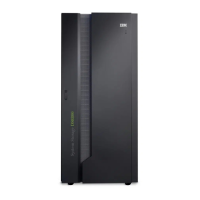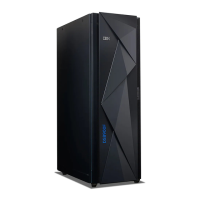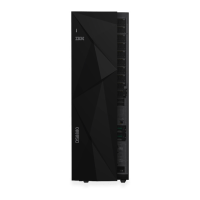extra bytes. The storage unit LIC uses the sequence number and LRC. The storage
unit does not transfer them to the host system.
Most fixed-block disk architectures use a fixed-byte sector of 512-bytes. This
includes most UNIX systems, including AIX. When used in a storage unit, the
format of a DDM has a fixed–byte sector of 524-bytes. The 524-byte sector format
enables the storage unit to connect to a wide range of host systems and share data
between them.
The 524-byte sector on the DDM is independent of the sector size exposed to the
host for a given device type emulation. Most LUNs for open-systems hosts are
exposed with a 512-byte sector.
System i host systems use eight bytes at the start of the sector. UNIX host systems
do not use these eight bytes when you attach them to the storage unit. The data
portion of the sector remains at 512-bytes for all host systems. A 2-byte sequence
number and a 2-byte LRC increase the size of the sector to 524-bytes.
Overview of the logical volume management software
The logical volume manager (LVM) software migrates data at a single logical
volume level, a physical volume (DDM) level, or entire contents of a volume
group. The LVM software provides complete control over all disks and file
systems.
The primary tasks involved in migrating data using the LVM rely upon the use of
LVM commands that affect the following functions:
v Copying
v Mirroring
v Migrating
Direct
copy is another method to migrate data. While this method uses LVM, its
main focus is on the use of the UNIX
®
find command and the cpio command.
Copying a complete logical volume
Use this information as a guide for using the logical volume manager (LVM) cplv
command to copy a complete logical volume.
The AIX LVM provides the cplv command for copying logical volumes within
volume groups or to different volume groups. You can use this command to create
a new logical volume while running the command, or you can overwrite an
existing logical volume. The following two examples shows how to use the cplv
command.
# cplv -v datavg -y newlv oldlv
# cplv -e existinglv oldlv
In the first example, the cplv command copies data from the existing logical
volume oldlv. It creates a new logical volume that it calls newlv (-y) in the
volume group datavg (-v). If you omit the -v option, the volume group to which
the existing logical volume belongs receives the new logical volume. When the
cplv command creates a new logical volume, it creates the new volume with
exactly the same characteristics as the existing logical volume.
Chapter 9. Migrating data to a storage unit 143

